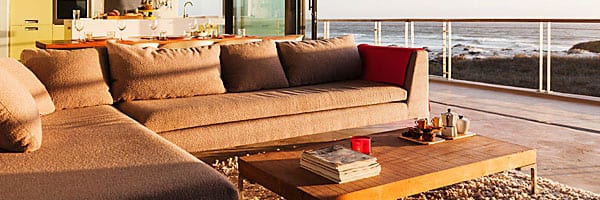
Rain water that has flooded the carpet isn’t really a health risk as long the carpet is scrubbed and dried prior to the development of mold or mildew. Establishing the source of the leakage or flood triggering the water damage is vital because it will identify whether a carpet water damage reconstruction is called for or whether the carpet is unfortunately unsalvageable.
Before attempting carpet reconstruction after a flood, first think about the various structural repairs that should be fixed in the house. These other repairs have an effect on the carpet so it would certainly be a shame to have restored the carpet and then have it damaged again due to structural issues. Make sure the source of the flood is entirely eliminated before the carpet flood restoration work begins. You will need a powerful vacuum to extract the water from the carpet. It is not enough to run the vacuum once over the carpet you will need to repeat this procedure a number of times until you are certain the vacuum cannot extract any more water from the carpet.
In many cases it would certainly be much better to replace the water damaged carpet rather than restoring it by washing and drying it out. In situations where the quantity of water is minimum and you called your local carpet flood damage specialist within 24 hours it is possible your carpets can be restored. If the flooded carpet is relatively brand-new or less than 10 years old and made of synthetic fibres it will prevent mold and mildew growth from developing so your carpets will not be an optimal breeding ground for molds and various other microorganisms.
When rain gutters are blocked water runs over the side of the gutters and falls onto the wall surfaces of the house, when the water has nowhere else to run it usually seeps into the basement which causes all sorts of problems. Cleaning your rain gutters only takes an hour of your time every couple of months and though it may be unpleasant work it is extremely simple to do. Look for standing water in your yard if you discover certain areas of your yard has a tendency to gather standing water you should install proper drainage channels for those areas. On the one hand this can be as simple as redirecting the flow of water to a more secure location, on the other hand it can be as intricate as having your yard re-landscaped depending upon the amount of standing water we are talking about. Ultimately standing water will make its home somewhere so it’s a lot easier and safer for you to find a place for it than for it to find its way into your home.
Most structures are made of concrete or brick which over time has a tendency to develop cracks. When flood damage occurs water flows through these cracks and into your walls which deteriorate the plasterboard and insulation and damages the electrical wirings. Since concrete and brick naturally develop cracks it is a good idea to have them waterproofed using a drylock applied to the surface. Drylock absorbs water before it seeps into the concrete or brick and so helps limit the quantity of water that can potentially cause the flooding. One word of caution however, speak with a professional in your area for recommendations on a brand of drylock. Some more affordable brand names have actually been known to in fact damage concrete over time.
Water flows naturally from a high peak to a low peak so if the land around your structure has its lowest peak where the soil and structure meet then it’s only natural you get water dripping into your basement. If you discover this in your case you will need to re-landscape your structure so the slopping ends are tilted away from your home. If you’re not sure how to do this you may need to give your local landscaping company a call but first be sure to move your belongings off the floor. For the majority of people a basement is the most common storage space where items are stored in cardboard boxes; however water can flow into cardboard boxes leaving your items covered in mold and mildew. To prevent this from happening you can create or purchase some utility shelves or racks, sit them a couple of inches off the floor and place your storage items on those instead.

Carpet is absorbent by nature so any kind of water that seeps beneath it the carpet will suck up and allow to sit undetected. If the carpet is not quickly dried out completely mold and mildew will begin to develop which will create a foul smell and a health hazard for you and your family and friends. You can also install a sump pump in your basement as a solution to standing water; if you do not currently have a sump pump and believe your property is prone to carpet flood damage then you need to purchase one. A sump pump is a hole in the basement which is designed to collect water on the floor. Inside the hole is a pump which redirects the water to a different location outside your basement once it reaches a certain level. Depending upon the type of sump pump you need it can be a little expensive; however less so compared to the cost of carpet restoration.
One method of carpet restoration is to wash and scrub the carpet by hand which takes a great deal of work but can be done without expert assistance if you are willing to put in the hard work. If the carpet is wet for more than 24 hours it is considered damaged and therefore needs to be replaced. Remember, only the carpet can be scrubbed and dried and in most cases if the underlay is drenched or moist it will also need to be replaced. Part of the carpet flood restoration process is to dry out the carpet as quickly as possible with a specialized wet or dry vacuum. The wet or dry vacuum will extract water from the carpet and will eliminate the spread of mold.
Carpet water damage is impossible to avoid once your home is flooded. You would need the skills of a carpet flood damage specialist to eliminate the damage and mold from your carpets and to restore your home to a pre-loss condition. Carpet water damage and the development of mold and mildew are often not anticipated but definitely should be attended to following a spill, leakage or flood which can damage your carpets. Never ever let a drenched carpet remain inside your home without taking appropriate action because mold and mildew can cause severe allergies and breathing ailments. Hire a local carpet flood damage specialist today to handle the problem immediately.
Among the most traumatic catastrophes facing property owners, insurance coverage firms and risk managers is water damage. Water damage can develop in a number of ways. A basement can be flooded because of a hurricane or a pipe rupture under your kitchen sink. Even a small amount of water damage from a seeping pipeline can become a major problem if not addressed at the outset. Even if you dry the carpet with a heater or a powerful vacuum cleaner, even if you wash the carpet with bleach mold and mildew will spread beneath the carpet surface or inside the walls which makes carpet flood restoration challenging. Carpet flood damage is the worst thing that can happen to your electronic devices; however when flooding does occur some digital devices or home appliances can be salvaged only if appropriate and prompt action is taken. If your carpets are heavily wet you should call your local carpet flood restoration specialist because they have the tools and expertise to effectively clean up and restore your carpets.
Whether carpet flood damage is caused by a natural or man-made calamity, moisture will quickly damage your home furnishings, equipment and building structure. Water damage reconstruction services can drastically reduce the scope of damage and save you hundreds of dollars in replacement expenses. Using the innovative, compact two-stage, commercial dehumidification devices they can effectively and efficiently return the humidity and moisture levels of a building structure back to normal. Most carpet flood damage restoration companies can restore your carpets within 48 hours; however this all depends on your speed of execution to eliminate excess moisture from your carpets and to prevent long term damage. Carpet flood damage technicians are equipped with thermo hygrometers, non-penetrating dampness meters, hydro sensors and thermo-imaging video cameras to locate moisture in any building structure.
If you wish to store your carpets to a pre-loss condition you must consider whether it is feasible to do so. This will depend on a meticulous evaluation of the structural cause of the flooding. If the cause is due to environmental conditions such as rainfall it would be safe to proceed with reconstruction. If flooding is caused by a ruptured pipeline it would also be safe to proceed with reconstruction as long as the pipeline is not connected to the sewage system.
Pocka Dola Carpet Flood Damage Melbourne on your side. Call us now on (03) 9111 5619 for all your carpet flood damage needs. You’ll be glad you did!














Comments are closed.